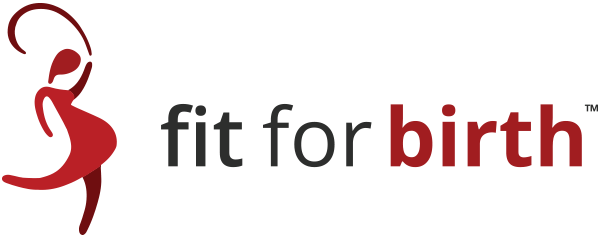Last updated 3/17/25

Diastasis Recti (DR, DRA), the separation of the two sides of the abdominal wall that is commonly associated with pregnancy, can benefit from specific corrective exercises, but exactly which protocols still elude formal research.
Key Takeaways from this Article:
- Much research has been performed over the last decade on how exercises and other therapies affect the separation of the abdominal wall during pregnancy, specifically after delivery has occurred.
- The research is inconsistent regarding identifying specific repeatable exercises and other treatments for DR.
- There are 6 important aspects for evaluating one’s DR, but typically only one of them (width) is focused upon in the research.
- In most cases, the most important factor for healing DR will be to improve core function. In addition, wellness practices like overall exercise habits, nutrition, sleep, and mindset are foundationally important for healing DR.
Below, for those of you who are either fitness professionals or awesome science & culture nerds, wanting to understand the deeper picture, you will find the following outline:
- The current state of DR Research
- Individual review of recent studies, including several systematic or meta analyses
- Recommendations from Fit For Birth
State of Diastasis Research
DR has been the focus of intense research over the last decade. Aside of a plethora of studies, we are also now seeing more systematic reviews or meta-analyses, which are comprehensive studies intended to compile & summarized the findings of many previous studies. The reason this is important is because it is common for individual studies to have weak links in some aspect of their data. Systematic reviews look at the big picture of many studies combined.
This article will review recent research, but with emphasis on showing you the bigger picture, systematic reviews.
As an example of the power of these big reviews, consider that just one of them initially examined 92 different studies, before whittling that number down to 31 for full-text analysis, and ultimately 16 that fit the correct criteria, in the correct manner, to draw final conclusions. This whittling process involves determining which studies have the most quality and pertinent data. In other words, 92 of the most recent studies worldwide were considered in order to be able to summarize what the overall findings are.
This process of taking a bird’s eye view of the research is critically important when you consider that it can be common – in any scientific research space – that a single study becomes promoted as an exciting new truth, only to later find out that results are unable to be reproduced. (As was the case with initial findings that red wine extends lifespan, later to be unable to be reproduced by other labs.1) And yes, it has also happened that prenatal fitness companies have claimed their exercise sequences to be scientifically valid, even sometimes amidst lack of scientific evidence, or poor quality research, or conflicts of interest among those who are performing that research.
And so, a “bird’s eye view” of systematic or meta research has the opportunity to tell us what is really, truly, proving to consistently and significantly help.

Review Diastasis Recti Research Studies
2023 Physiotherapy Systematic Review2
- Objectives: To determine whether or not interventions that included abdominal exercises (and possibly also abdominal binding, kinesiotape and electrical stimulation) could reduce the presence and width of DR in pregnant and postpartum women.
- Details: 16 trials including 698 women. Reviewed studies leading up until August 2021.
- Findings: These “interventions do not lead to clinically significant reductions in inter-recti distance in women postnatally but abdominal exercises may have other physical and psychosocial benefits.”
- Fit For Birth Opinion: So, this collection of studies suggests that the wide array of interventions (exercises, binding, tape, and electrical stimulation) are collectively not narrowing the gap, but that exercise was still a benefit. Is narrowing the gap even the most important effect that these interventions should be aiming for? (Not likely). Furthermore, prevention of DR by learning how to appropriately use the core prior to and during pregnancy is ideal compared to trying to narrow the separation once the belly has been stretched too far. Once postpartum, it is well-established scientifically that exercise has a multitude of benefits that ultimately help a postpartum mom to feel better physically and emotionally, regardless of whether or not that particular program is going to narrow the gap.
2023 Heliyon Systematic Review3
- Objectives: To evaluate the effectiveness of rehabilitation training programs for postpartum DR treatment.
- Details: Four databases and 16 studies, including 1129 women. Reviewed studies published up to February 1, 2023.
- Findings: Authors wrote, “To some extent, women with postpartum DRA can benefit from the specific rehabilitation regimen by alleviating postpartum inter-rectus distance.” However, they concluded: “It is currently controversial whether women with postpartum DRA can benefit from specific exercise regimens, but rehabilitation training can effectively improve postpartum inter-rectus distance,” calling for higher-quality studies in the future.
- Fit For Birth Opinion: Well, it is apparently one thing for an exercise program to “improve inter-rectus distance” (narrow the gap) and another thing for that routine to actually cause “benefit” in postpartum women. Is closing inter-rectus distance (IRD) an actual benefit? (Maybe not.) This is where the scientific literature will remain super murky until scientific authors more clearly begin to study (a) the other critical aspects of healing DR, and (b) consistent variables for a variety of different exercise & treatment sequences.
2024 International Urogynecology Journal Retrospective Cohort Study6
- Objectives: To investigate if DRA can cause adverse outcomes for different long-term postpartum women.
- Details: This study recruited 437 long-term postpartum women at five different time points (3, 5, 10, 20, and 30 years postpartum).
- Findings: Authors found that women with diastasis (measured only as IRD >2cm) experienced more severe lower back pain, and poorer quality of life only 10 years postpartum. (Women with >3cm IRD suffered at 3, 5, 10, and 20 year time frames, with more low back pain and lower quality of life.) Authors of the study wonder if the criteria for DRA should be adjusted to >3cm, and noted that, “most of the effects are particularly evident within 3–10 years postpartum, but becomes insignificant 20 and 30 years postpartum.”
- Fit For Birth Opinion: The larger the gap, the more likely the suffering. This makes sense, since the LA (linea alba) is a tendon sheath designed to hold the abs together. Although the timeline is long (ie. 30 years), it is encouraging that – given enough time – the degree of lower back pain or poor quality of life, is shown to improve.
2024 British Journal of Sports Medicine Systematic Review & Meta-Analysis7
- Objectives: To examine the effect of exercise during the first year postpartum on pelvic floor disorders and diastasis recti abdominis.
- Details: 65 studies from 24 countries.
- Findings: Authors found, “Evidence supports the effectiveness of postpartum pelvic floor muscle training in reducing the odds of urinary incontinence and pelvic organ prolapse and postpartum abdominal exercise training in reducing inter-rectus distance.”
- Fit For Birth Opinion: Use Corrective Exercise, as soon as possible! It is so encouraging that so many studies are finding this to be true, in this case for preventing incontinence and prolapse! At FFB, the suggestion is to use corrective exercise preconception & prenatally, so that by the time the busy-ness of postpartum comes around, you (a) likely have already prevented any issue from occurring, and (b) know what to do if needed.
2025 Sport Medicine Meta-Analysis8
- Objectives: To compare the validity of different non-surgical treatments for postpartum DR.
- Details: Twenty-one RCTs comprising 1195 participants. Reviewed studies published up to April, 2024.
- Findings: Authors found that the “best treatment for reducing IRD” was NMES (neuromuscular electrical stimulation systems) with exercise, followed by acupuncture with exercise. They wrote that, “Treatments combined with exercise demonstrated better rankings for reducing IRD than individual treatments without exercise.”
- Fit For Birth Opinion: This is critically important, because it is finding that exercise is indeed the most important foundational factor for healing DR.
2025 Physiotherapy Research International Systematic Review & Meta Analysis9
- Objectives: To identify the most effective non-surgical treatment to reduce post-partum DRA.
- Details: Thirteen RCTs.
- Findings: Authors found that “abdominal exercises reduce IRD below the umbilicus more effectively than binding and no intervention, but their effectiveness above the umbilicus is unclear.”
- Fit For Birth Opinion: First of all, it’s so amazing that the most recent and comprehensive “bird’s eye view” studies continue to find that exercise is consistently effective! Secondly, how effective may be dependent upon which exercises are used. In fact, in corrective exercise, it’s not only which exercises you choose, but also how you do them. This can make all the difference in outcomes, and since many studies are using many different exercise methods, it’s reasonable that results can vary.
Here are two more non-systematic reviews, which we evaluated in our original “2023 update” to this article. They help to provide a more complete sense of the current status of DR research…

2023 Journal of Physiotherapy4
- Objectives: To determine the effect of a 12-week, home-based, abdominal exercise program containing head lifts and abdominal curl-ups on the width of the gap in women with DR, 6 to 12 months postpartum
- Details: 70 women did 12 weeks of exercise, 5x/week. Exercises included: head lifts, abdominal curl-ups and twisted abdominal curl-ups. The control group received no exercises or other intervention. Ultrasound was used to measure.
- Findings: (a) The exercise program did not improve or worsen the width of the gap. (b) The program did improve thickness and strength of the 6-pack muscles. (c) Effects on other secondary outcomes (like pelvic floor disorders, and pain in the lower back, pelvic girdle, or abdominals) were “trivial or unclear.”
- Fit For Birth Opinion: This study is a perfect example of the state of DR research today: not able to consistently reproduce benefits. It makes sense that doing crunches builds muscle size and strength – this has been scientifically proven for a long time now. And this particular study happens to have found that these particular exercises had no effect on the width of the actual separation (even though other recent studies have indeed found IRD closure when doing crunches). This is exactly why we need to start defining DR in a different manner, and why we need a revamp in how we test various exercise sequences.
2023 Obstetrics & Gynaecology5
- Objectives: To determine if factors like newborn weight, delivery mode, delivery times and prenatal body mass index (BMI) could affect the occurrence and severity of DR.
- Details: 400 subjects, of which 327 had DR. Note that DR standards used were from the European hernia society guidelines, and included any gap larger than 20mm (mild 20-30mm, moderate 31-50mm, and severe >50mm).
- Findings: Women with DR were more likely to be in one of these categories: having delivered more than one baby already, having a C-section, higher newborn weight, higher prenatal BMI (body mass index).
- Fit For Birth Opinion: If this study holds up in subsequent research, here are some things that make sense: (1) Having delivered one baby already means that the woman has already stretched her belly once before, making it more likely to stretch apart more quickly this time. (2) It is common that although a horizontal incision is applied for most C-sections, the doctor may use hands to tear vertically a portion of the abdominal wall in order to make space for baby’s head to emerge (See What Happens to the Abdominal Muscles During a C-Section for more details.) (3) Unlike generations past, babies being born overweight have now become an increasing problem. Larger babies might encourage more abdominal stretching, although proper core awareness training during pregnancy should control for this possibility. (4) Higher prenatal BMI is an imperfect measurement of whether or not the pregnant woman herself is overweight. Regardless, it seems plausible that an increase in abdominal fat could lend to the pressures that cause the belly to press outward, becoming the microtears that cause DR.
Recommendations from Fit For Birth

6 Aspects for Healing Diastasis Recti
There are six aspects that must be considered when providing meaningful solutions for Diastasis Recti. These are:
- Width
- Integrity
- Function
- Body fat
- Skin
- Mindset
In a nutshell, width is not usually the most important factor to consider in healing from DR. In all but the more extreme cases, width is more often an aspect of aesthetics rather than pain or function. Far more progress is made by first improving one’s function, to see how that impacts pain and other complaints. Please visit a short article here for a greater understanding of these 6 critical aspects.
Function & Foundations are Most Important
Solving DR must begin with these two major areas:
- Function
- Foundational Wellness Practices
First, function must be addressed. Do you inhale naturally and gently into your ribs and lower torso? Is your exhale connected to your abdominal engagement just a bit? And does this “Core Breathing” system seem to ramp up or down depending upon the challenge of the lift or activity?
Most people are not connected to their core throughout the day, which is the biggest challenge that causes diastasis to occur and remain. Awareness of your core, mindfully, moment by moment is critical. From this place, you will more naturally settle into activating the appropriate “intra-abdominal pressure” which is just a fancy way of saying that you regulate how much tension goes into your core, and therefore through your abdominal wall.
The truth is that nearly everyone needs to re-learn this, pregnant or not. And this is the foundation that must be set before coming to any conclusions about your DR. It is through function that you will see your width and integrity change, or not.
Second, overall movement habits and nutrition, as well as potentially other lifestyle foundations like sleep and mindset, are what impact body fat and excess skin the most. Most of us know these factors all too well, and many of us need guidance in adjusting them.
- Finding the right level of exercise for you is important for making sure your body knows how to burn body fat. Some people need to train more intensely, while others need to learn how to cultivate energy during movement, rather than burning from an already exhausted system. Which side of the spectrum do you fall on?
- Finding the right foods and hydration for you is so critical for both burning fat, and withstanding scarring from skin stretching. Quality of food (especially unprocessed foods) teach the body how to regulate body fat, and also provide resilience to the molecules of your skin (and body in general). Hydrated skin is a necessary baseline step to avoid stretch marks and subsequent excess skin, and is far better to be achieved through one’s consumption of water, not via lotions.
- Finding the right levels of sleep is now being considered more important than nutrition and exercise in many cases. Sleep is how you repair. If the stretching of a pregnant belly causes microtears of diastasis during the day, It is possible that those tears can be repaired at night, in deep sleep.
- A final, and actually most important factor here is mindset. Chronic stress directly catabolizes tissue, and worsens all body function. Specifically, a stressed person will not achieve or maintain proper function as easily. Nor will they be able to access fat-burning pathways. A stressed person also cannot heal tissue as quickly because resources are being spent elsewhere. The degree that one’s thoughts and emotions amount to that ubiquitous term “stress” will determine their level of progress in all areas discussed thus far.
If you want a personal assessment and fitness coaching to help you feel settled once and for all regarding your DR, please view Fit For Birth training packages here.
—————————————————-
James Goodlatte is a Father, Holistic Health Coach, Corrective Exercise Practitioner, Speaker, Author, Professional Educator, and the founder of Fit For Birth. Since 2008, when he found out he would be a father, his passion for holistic wellness shifted to children and families. Today, he is a driving force in providing Continuing Education Credits for the pre and postnatal world, with Fit For Birth professionals in 52 countries. James is also the program director for Fit For Birth pre & postnatal personal training worldwide, and is a contributing member of the First 1000 Days Initiative at the Global Wellness Institute.
REFERENCES
- 2023. Attia, Peter. Outlive: The Science and Art of Longevity. Harmony Books.
- 2023, June. Benjamin, et al. Conservative interventions may have little effect on reducing diastasis of the rectus abdominis in postnatal women – A systematic review and meta-analysis. Physiotherapy. Retrieved 11/12/23 from https://www.sciencedirect.com/science/article/abs/pii/S0031940623000135
- 2023, October. Chen, et al. Rehabilitations for maternal diastasis recti abdominis: An update on therapeutic directions. Heliyon. Retrieved 11/12/23 from https://pubmed.ncbi.nlm.nih.gov/37867827/ and https://www.sciencedirect.com/science/article/pii/S2405844023081641
- 2023, July. Gluppe, et al. Curl-up exercises improve abdominal muscle strength without worsening inter-recti distance in women with diastasis recti abdominis postpartum: a randomised controlled trial. Journal of Physiotherapy. Retrieved 11/12/23 from https://pubmed.ncbi.nlm.nih.gov/37286390/
- 2023, October. Zhou & Zhang. Evaluation of diastasis recti abdominis and its risk factors of 42 days postpartum women using ultrasonography. Obstetrics & Gynaecology. Retrieved 11/12/23 from https://obgyn.onlinelibrary.wiley.com/doi/10.1002/uog.26433?af=R
- 2024. Wang, et al. Long-Term Outcomes of Diastasis Recti Abdominis in Postpartum Women: A Retrospective Cohort Study. International Urogynecology Journal. Retrieved 3/17/25 from https://link.springer.com/article/10.1007/s00192-024-05930-0
- 2024. Beamish, et al. Impact of postpartum exercise on pelvic floor disorders and diastasis recti abdominis: a systematic review and meta-analysis. British Journal of Sports Medicine. Retrieved 3/17/25 from https://bjsm.bmj.com/content/early/2025/02/05/bjsports-2024-108619.abstract AND https://doi.org/10.1136/bjsports-2024-108619
- 2025. Wu, et al. Comparative Efficacy and Acceptability of Non-surgical Treatments with or without Exercise for Diastasis Recti Abdominis in Postpartum Women: A Network Meta-Analysis of Randomized Controlled Trials. Sports Medicine. Retrieved 3/17/25 from https://link.springer.com/article/10.1007/s40279-025-02179-5
- 2025. Khawaja, Abdul, Rehman, et al. Comparative Efficacy of Abdominal Exercises and Abdominal Binding on Diastasis Recti Abdominis Reduction in Postpartum Women: A Systematic Review and Meta-Analysis of Randomized Controlled Trials. Physiotherapy Research International. Retrieved 3/17/25 from https://onlinelibrary.wiley.com/doi/abs/10.1002/pri.70038

